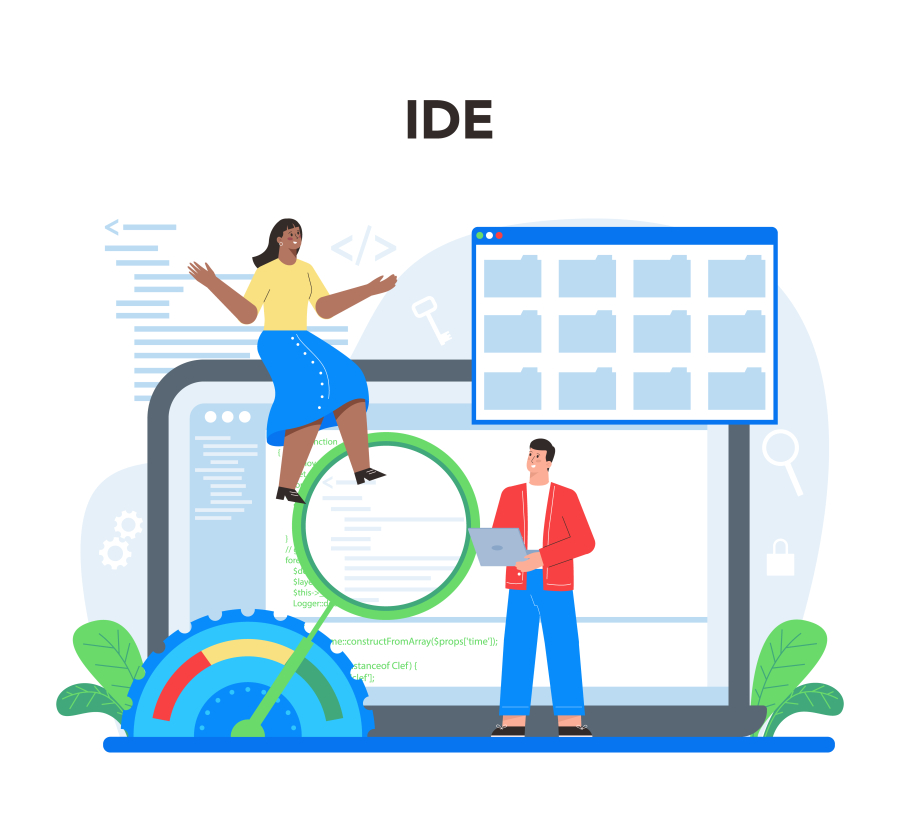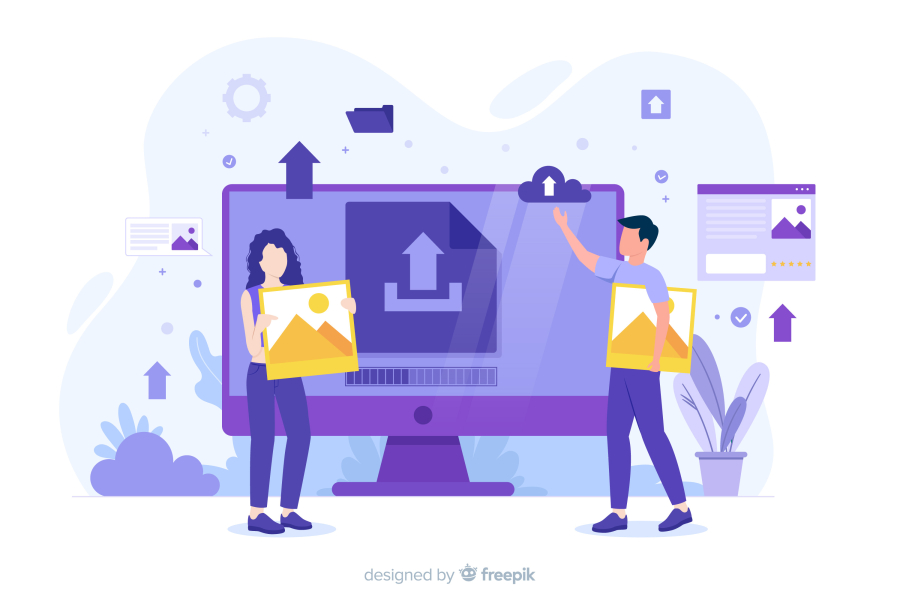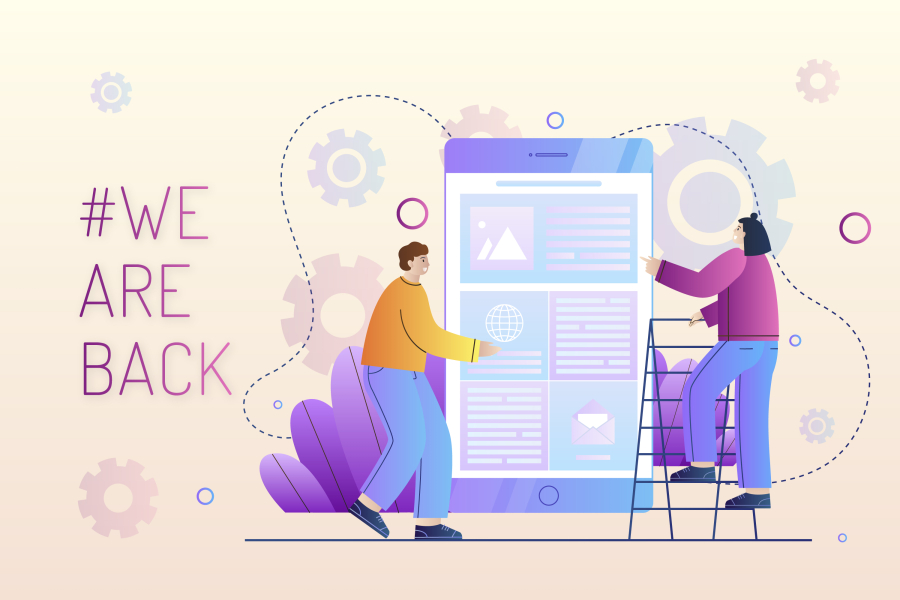How to Build a User-Friendly UI/UX for Apps
Creating a seamless and intuitive user interface (UI) and user experience (UX) is no longer optional—it's essential for the success of any mobile or web application. In 2025, users expect more than just functionality; they want visually appealing, responsive, and frictionless experiences. For freelancers, especially those offering mobile app development services, understanding the fundamentals and evolving trends in UI/UX design is critical.
At freelancerbridge, we help freelance developers and designers build and deliver top-tier user-centric apps. This article serves as a complete guide for creating a user-friendly UI/UX, helping you elevate client satisfaction and user retention.
📘 Long Description: How to Build a User-Friendly UI/UX for Apps
🔹 What Is UI/UX Design?
UI (User Interface) refers to the visual elements a user interacts with—buttons, layouts, colors, typography.
UX (User Experience) focuses on the overall journey a user goes through—navigation flow, usability, interaction efficiency, and satisfaction.
User-friendly UI/UX ensures that apps are not just functional, but enjoyable and intuitive to use.
🔹 Why UI/UX Matters for Mobile Apps
First Impressions Count – 94% of users judge apps based on first impressions.
User Retention – Better UI/UX leads to lower bounce rates and higher user retention.
Brand Credibility – A professional design builds trust.
Increased ROI – Every $1 invested in UX yields $100 in return.
🔍 Key Principles of User-Friendly UI/UX Design
1. Keep It Simple and Minimal
Avoid cluttered screens.
Use clear icons and readable fonts.
Focus on essential features per screen.
Freelancer Tip: Simplicity boosts usability and reduces cognitive load.
2. Follow a Consistent Design Language
Maintain consistency in buttons, colors, and fonts.
Create a visual hierarchy (using size, color, contrast).
Stick to established UI guidelines like Google’s Material Design or Apple’s Human Interface Guidelines.
SEO Point: Consistency enhances UX and improves app store ratings.
3. Use Intuitive Navigation
Place the navigation bar where users expect it (bottom tabs, hamburger menus).
Use breadcrumbs or progress indicators in multi-step processes.
Minimize the number of clicks needed to perform key tasks.
Client Value: Easy navigation leads to better user flow and engagement.
4. Design for Touch, Not Click
Optimize touch targets (buttons should be at least 48px by 48px).
Avoid placing elements too close to each other.
Enable swipe gestures for common actions.
Freelancer Note: Mobile-first design is now the standard.
5. Responsive and Adaptive Design
Ensure UI adapts to different screen sizes (phones, tablets, foldables).
Use flexible grids and layout breakpoints.
SEO Benefit: Responsive design improves mobile SEO and accessibility.
6. Prioritize Accessibility (A11Y)
Use high-contrast colors and legible fonts.
Provide alternative text for images and controls.
Support screen readers and voice controls.
Inclusive Design = More Users: Don’t exclude users with disabilities.
7. Optimize App Load Time
Compress images and remove unused assets.
Implement lazy loading for large content.
Avoid blocking scripts.
SEO Insight: Faster load times reduce bounce rate and improve app store ranking.
8. Microinteractions and Animations
Use subtle transitions to guide user attention.
Include feedback animations (e.g., button press effects, loading indicators).
Avoid excessive or distracting motion.
Freelancer Tip: Good animation adds delight; bad animation adds friction.
9. Offer Personalized User Experiences
Use data like location, behavior, and preferences to personalize content.
Show relevant onboarding flows or tutorials.
UX Strategy: Personalization improves engagement and retention.
10. Collect and Apply User Feedback
Include in-app surveys or feedback buttons.
Use tools like Hotjar, Mixpanel, or Google Analytics for behavior analysis.
Feedback Loop: Improve UI/UX over time using actual user data.
🔧 UI/UX Design Process for Freelancers
Step 1: Research & Discovery
Understand target users (personas, demographics).
Analyze competitor apps.
Define business goals and KPIs.
Freelancer Insight: Ask the right questions before designing.
Step 2: Wireframing & Prototyping
Create low-fidelity wireframes to layout the structure.
Use tools like Figma, Sketch, Adobe XD, or InVision.
Share interactive prototypes with clients before development.
Best Practice: Validate designs early to avoid costly revisions.
Step 3: Design System and Style Guide
Build reusable components (buttons, cards, forms).
Define rules for typography, spacing, colors, etc.
Branding Bonus: A design system ensures visual coherence.
Step 4: User Testing & Iteration
Conduct usability tests with real users.
Note confusion points or repeated errors.
Iterate based on testing feedback.
Freelancer Value Add: Show clients you care about real users.
Step 5: Final Handoff to Development
Prepare assets and handoff via Figma or Zeplin.
Include notes for interactions, states, and responsiveness.
Collaboration Tip: Clean handoff = smoother development.
📈 UI/UX Trends in 2025 You Should Watch
Dark Mode Design – Better battery usage and visual comfort.
Glassmorphism – Transparent elements for sleek visual effects.
Voice-First Interfaces – Integrate with Alexa, Siri, Google Assistant.
Gesture-Driven Interfaces – Replace traditional UI controls.
AI-Driven Personalization – Apps adapting in real-time.
Stay ahead by learning and applying these trends in client projects.
💬 Common UI/UX Mistakes to Avoid
Ignoring mobile responsiveness.
Overcomplicating navigation.
Using low-contrast text or confusing icons.
Not testing with real users.
Skipping onboarding or tutorials.
Fixing these issues can drastically improve app success metrics.
🎯 Checklist: What Makes an App UI/UX Truly User-Friendly
Simple and clean interface
Clear call-to-action (CTA) buttons
Smooth and predictable navigation
Quick loading times
Adaptive and responsive layouts
Visual consistency and design language
User feedback integration
Accessibility compliance
Intuitive forms and inputs
Effective use of white space
Use this checklist during every freelance project review.
💼 How Freelancers Can Offer UI/UX as a Service
Many developers overlook UI/UX, but offering it as a service can increase your value and income.
Offer:
UI/UX audits
Mobile app redesigns
MVP wireframes and clickable prototypes
Accessibility enhancements
Branding and design system creation
freelancerbridge tip: Package UI/UX with app development to stand out in a competitive market.
🧭 Conclusion
A well-designed user interface and user experience can make or break an app. As a freelancer in 2025, delivering polished, accessible, and intuitive designs is no longer optional—it’s a key differentiator. With the strategies, principles, and processes outlined in this guide, you can build user-friendly UI/UX designs that delight users and impress clients.
At freelancerbridge, we encourage all freelance professionals to level up their design thinking, stay current with trends, and always prioritize user needs in every project. Whether you’re working solo or collaborating with a team, UI/UX excellence begins with empathy, consistency, and iteration.
Creating a seamless and intuitive user interface (UI) and user experience (UX) is no longer optional—it's essential for the success of any mobile or web application. In 2025, users expect more than just functionality; they want visually appealing, responsive, and frictionless experiences. For freelancers, especially those offering mobile app development services, understanding the fundamentals and evolving trends in UI/UX design is critical.
At freelancerbridge, we help freelance developers and designers build and deliver top-tier user-centric apps. This article serves as a complete guide for creating a user-friendly UI/UX, helping you elevate client satisfaction and user retention.
📘 Long Description: How to Build a User-Friendly UI/UX for Apps
🔹 What Is UI/UX Design?
UI (User Interface) refers to the visual elements a user interacts with—buttons, layouts, colors, typography.
UX (User Experience) focuses on the overall journey a user goes through—navigation flow, usability, interaction efficiency, and satisfaction.
User-friendly UI/UX ensures that apps are not just functional, but enjoyable and intuitive to use.
🔹 Why UI/UX Matters for Mobile Apps
First Impressions Count – 94% of users judge apps based on first impressions.
User Retention – Better UI/UX leads to lower bounce rates and higher user retention.
Brand Credibility – A professional design builds trust.
Increased ROI – Every $1 invested in UX yields $100 in return.
🔍 Key Principles of User-Friendly UI/UX Design
1. Keep It Simple and Minimal
Avoid cluttered screens.
Use clear icons and readable fonts.
Focus on essential features per screen.
Freelancer Tip: Simplicity boosts usability and reduces cognitive load.
2. Follow a Consistent Design Language
Maintain consistency in buttons, colors, and fonts.
Create a visual hierarchy (using size, color, contrast).
Stick to established UI guidelines like Google’s Material Design or Apple’s Human Interface Guidelines.
SEO Point: Consistency enhances UX and improves app store ratings.
3. Use Intuitive Navigation
Place the navigation bar where users expect it (bottom tabs, hamburger menus).
Use breadcrumbs or progress indicators in multi-step processes.
Minimize the number of clicks needed to perform key tasks.
Client Value: Easy navigation leads to better user flow and engagement.
4. Design for Touch, Not Click
Optimize touch targets (buttons should be at least 48px by 48px).
Avoid placing elements too close to each other.
Enable swipe gestures for common actions.
Freelancer Note: Mobile-first design is now the standard.
5. Responsive and Adaptive Design
Ensure UI adapts to different screen sizes (phones, tablets, foldables).
Use flexible grids and layout breakpoints.
SEO Benefit: Responsive design improves mobile SEO and accessibility.
6. Prioritize Accessibility (A11Y)
Use high-contrast colors and legible fonts.
Provide alternative text for images and controls.
Support screen readers and voice controls.
Inclusive Design = More Users: Don’t exclude users with disabilities.
7. Optimize App Load Time
Compress images and remove unused assets.
Implement lazy loading for large content.
Avoid blocking scripts.
SEO Insight: Faster load times reduce bounce rate and improve app store ranking.
8. Microinteractions and Animations
Use subtle transitions to guide user attention.
Include feedback animations (e.g., button press effects, loading indicators).
Avoid excessive or distracting motion.
Freelancer Tip: Good animation adds delight; bad animation adds friction.
9. Offer Personalized User Experiences
Use data like location, behavior, and preferences to personalize content.
Show relevant onboarding flows or tutorials.
UX Strategy: Personalization improves engagement and retention.
10. Collect and Apply User Feedback
Include in-app surveys or feedback buttons.
Use tools like Hotjar, Mixpanel, or Google Analytics for behavior analysis.
Feedback Loop: Improve UI/UX over time using actual user data.
🔧 UI/UX Design Process for Freelancers
Step 1: Research & Discovery
Understand target users (personas, demographics).
Analyze competitor apps.
Define business goals and KPIs.
Freelancer Insight: Ask the right questions before designing.
Step 2: Wireframing & Prototyping
Create low-fidelity wireframes to layout the structure.
Use tools like Figma, Sketch, Adobe XD, or InVision.
Share interactive prototypes with clients before development.
Best Practice: Validate designs early to avoid costly revisions.
Step 3: Design System and Style Guide
Build reusable components (buttons, cards, forms).
Define rules for typography, spacing, colors, etc.
Branding Bonus: A design system ensures visual coherence.
Step 4: User Testing & Iteration
Conduct usability tests with real users.
Note confusion points or repeated errors.
Iterate based on testing feedback.
Freelancer Value Add: Show clients you care about real users.
Step 5: Final Handoff to Development
Prepare assets and handoff via Figma or Zeplin.
Include notes for interactions, states, and responsiveness.
Collaboration Tip: Clean handoff = smoother development.
📈 UI/UX Trends in 2025 You Should Watch
Dark Mode Design – Better battery usage and visual comfort.
Glassmorphism – Transparent elements for sleek visual effects.
Voice-First Interfaces – Integrate with Alexa, Siri, Google Assistant.
Gesture-Driven Interfaces – Replace traditional UI controls.
AI-Driven Personalization – Apps adapting in real-time.
Stay ahead by learning and applying these trends in client projects.
💬 Common UI/UX Mistakes to Avoid
Ignoring mobile responsiveness.
Overcomplicating navigation.
Using low-contrast text or confusing icons.
Not testing with real users.
Skipping onboarding or tutorials.
Fixing these issues can drastically improve app success metrics.
🎯 Checklist: What Makes an App UI/UX Truly User-Friendly
Simple and clean interface
Clear call-to-action (CTA) buttons
Smooth and predictable navigation
Quick loading times
Adaptive and responsive layouts
Visual consistency and design language
User feedback integration
Accessibility compliance
Intuitive forms and inputs
Effective use of white space
Use this checklist during every freelance project review.
💼 How Freelancers Can Offer UI/UX as a Service
Many developers overlook UI/UX, but offering it as a service can increase your value and income.
Offer:
UI/UX audits
Mobile app redesigns
MVP wireframes and clickable prototypes
Accessibility enhancements
Branding and design system creation
freelancerbridge tip: Package UI/UX with app development to stand out in a competitive market.
🧭 Conclusion
A well-designed user interface and user experience can make or break an app. As a freelancer in 2025, delivering polished, accessible, and intuitive designs is no longer optional—it’s a key differentiator. With the strategies, principles, and processes outlined in this guide, you can build user-friendly UI/UX designs that delight users and impress clients.
At freelancerbridge, we encourage all freelance professionals to level up their design thinking, stay current with trends, and always prioritize user needs in every project. Whether you’re working solo or collaborating with a team, UI/UX excellence begins with empathy, consistency, and iteration.


 by Emily
by Emily




